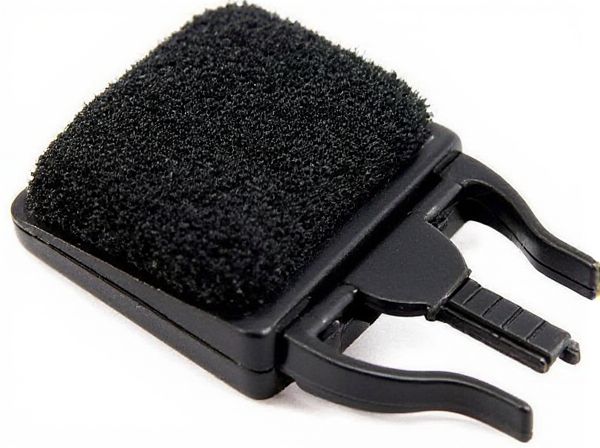
Photo illustration: Push Clips vs Hook Fasteners
Push clips provide a secure and easy-to-install fastening solution, ideal for attaching panels and trims with minimal tools. Hook fasteners, such as Velcro, offer adjustable and reusable bonding suitable for lightweight fabrics and temporary attachments. Choose the option that best suits your project's durability and flexibility requirements.
Table of Comparison
| Feature | Push Clips | Hook Fasteners |
|---|---|---|
| Installation | Quick and simple, pushes into holes | Requires precise alignment, hooks onto loops |
| Security | Firm hold, resists pull-out | Moderate hold, easy to detach |
| Durability | High resistance to wear and tear | Prone to wear, may loosen over time |
| Reusability | Reusable but can break if forced | Highly reusable, no damage on removal |
| Best Use | Permanent fixtures for car carpet | Temporary or adjustable attachments |
| Cost | Generally low cost per piece | Moderate cost, varies by size |
Introduction to Fastening Solutions
Push clips and hook fasteners are essential fastening solutions widely used across automotive, apparel, and construction industries due to their distinct attachment mechanisms. Push clips offer quick installation with durable plastic components that snap into pre-drilled holes, providing secure and vibration-resistant fastening ideal for panel assemblies. Hook fasteners rely on interlocking hook-and-loop systems, enabling adjustable, reusable connections favored in textiles, cable management, and lightweight securing applications.
What are Push Clips?
Push clips are fastening devices commonly used in automotive and electronic applications to securely join panels or components without the need for screws or adhesives. These clips consist of a flexible pin that expands upon insertion into a pre-drilled hole, creating a strong hold while allowing for easy installation and removal. Push clips are favored for their durability, vibration resistance, and ability to maintain alignment in assembly processes.
What are Hook Fasteners?
Hook fasteners are fastening devices that use hook-shaped components to securely attach two surfaces or materials. They are commonly made from durable materials like plastic or metal and designed to interlock with loop-type counterparts, providing a reusable and adjustable connection. Ideal for applications requiring frequent fastening and unfastening, hook fasteners offer strong hold and versatility in textiles, automotive, and industrial industries.
Key Differences Between Push Clips and Hook Fasteners
Push clips secure materials by snapping into a hole or slot, providing a firm, vibration-resistant hold primarily used in automotive and electronics assembly. Hook fasteners rely on mating hooks and loops, offering adjustable, reusable attachment ideal for fabric and cable management applications. The key differences lie in push clips' rigid, permanent fixing versus hook fasteners' flexibility and reusability.
Applications of Push Clips
Push clips are widely used in automotive and electronic applications for securing panels, trim, and wiring harnesses due to their ease of installation and strong holding power. These fasteners provide vibration resistance and quick removal without damaging components, making them ideal for assembly lines and maintenance tasks. Their compatibility with plastic and metal substrates enhances their versatility across various manufacturing and repair environments.
Applications of Hook Fasteners
Hook fasteners excel in applications requiring adjustable and reusable connections, such as securing cable bundles, mounting lightweight tools, and organizing office supplies. Their versatility allows for easy attachment and detachment on various surfaces including textiles, walls, and equipment panels. Industries spanning electronics, automotive, and home organization frequently rely on hook fasteners for efficient, customizable fastening solutions.
Advantages of Push Clips
Push clips offer superior ease of installation, requiring no tools and enabling quick attachment in automotive and furniture assembly. Their design provides a secure and vibration-resistant hold, which reduces wear and the need for maintenance compared to hook fasteners. Push clips also accommodate a variety of panel thicknesses, enhancing versatility in manufacturing and repair applications.
Advantages of Hook Fasteners
Hook fasteners offer superior holding strength compared to push clips, making them ideal for heavy-duty applications and frequent use. They provide easier adjustability and removal without damaging the material, ensuring durability and repeated reusability. Their versatility across various surfaces and materials enhances their practicality in automotive, upholstery, and industrial settings.
Choosing the Right Fastener for Your Project
Push clips provide strong, vibration-resistant fastening ideal for automotive and panel applications, while hook fasteners offer easy adjustability and reuse in fabric and lightweight material attachments. Selecting the right fastener depends on your project's material type, load requirements, and whether frequent removal or repositioning is needed. For rigid surfaces demanding durable hold, push clips excel; for flexible, removable connections, hook fasteners deliver superior convenience.
Conclusion: Which Fastener is Best?
Push clips offer quick installation and strong holding power for automotive panels, making them ideal for frequent assembly and disassembly tasks. Hook fasteners provide enhanced adjustability and reusable bonding strength, suitable for applications requiring flexibility and easy repositioning. Choosing the best fastener depends on the specific needs of the project, with push clips favored for durability and speed, while hook fasteners excel in versatility and repeated use.
 caratoz.com
caratoz.com